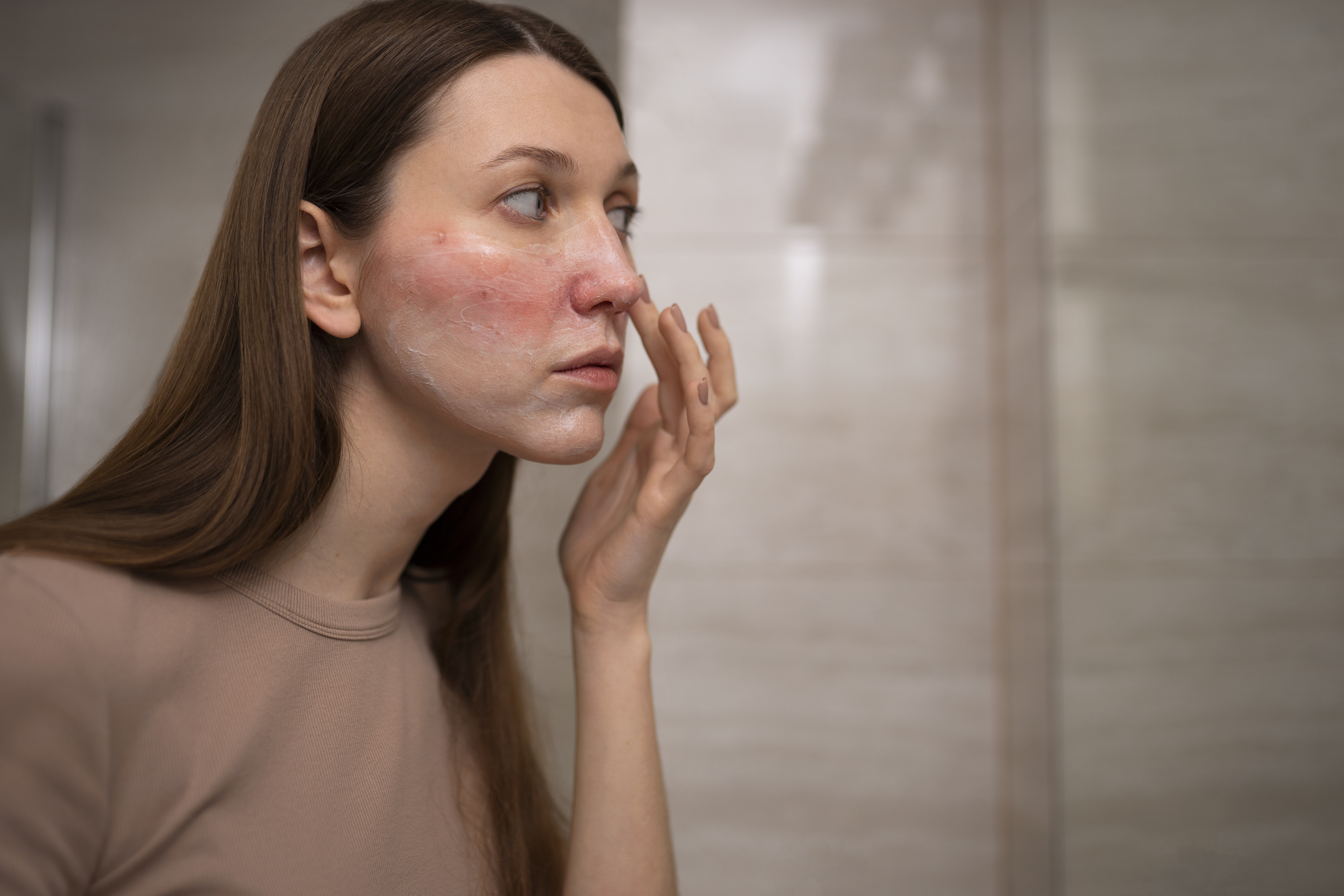Overview:
Melasma is a common skin condition that causes brown or gray-brown patches, typically on the face, especially the cheeks, forehead, nose, and upper lip. It’s more common in women and often linked to hormonal changes like pregnancy, oral contraceptives, or thyroid issues. Sun exposure and stress can aggravate it. Although not harmful, it can affect appearance and self-esteem.
Clinical Presentation:
Melasma appears gradually and is usually symmetrical. It doesn’t itch, hurt, or bleed but tends to become darker over time with sun exposure or hormonal shifts.
Common Symptoms of Melasma:
- Dark, discolored patches: Usually brown or grayish on face
- Symmetrical pattern: Appears evenly on both sides of the face
- Patchy pigmentation: Uneven skin tone, especially on cheeks or upper lip
- No itching or pain: Non-inflammatory and painless
- Triggered by sunlight: Worsens with UV exposure
- Hormonal influence: Often appears during pregnancy or after birth control pills
- Gradual onset: Develops slowly over weeks or months
- Emotional impact: May cause distress or low confidence
- Resistance to creams: Doesn’t fade easily with over-the-counter products
- Possible recurrence: Tends to return if triggers persist
Diagnosis:
Melasma is diagnosed clinically by skin examination. Additional tests may be needed to rule out underlying hormonal causes.
- Visual Examination: Identifying typical melasma patterns on the skin
- Wood’s Lamp Examination: Helps determine the depth of pigmentation
- Hormonal Profile: Especially in women with thyroid or menstrual irregularities
- Medical History: To identify triggers like pregnancy, pills, or sun exposure
- Skin Biopsy (rare): Done if diagnosis is uncertain
Homeopathic Treatment for Melasma:
Homeopathy treats melasma by addressing the root cause—be it hormonal imbalance, thyroid issues, or emotional stress. It offers a long-term and natural approach to reducing pigmentation without harsh chemicals or bleaching agents.
Key Remedies (Selected Based on Individual Symptoms):
-
Sepia
-
Best for melasma linked to hormonal changes. Suited for women with menstrual irregularities, sadness, and dull complexion.
-
Thuja Occidentalis
-
For brown spots and pigmentation associated with hormonal disturbances or long-term cosmetic use.
-
Lycopodium
-
For liver-related pigmentation and digestive issues. Suited for individuals who crave sweets and suffer from bloating.
-
Sulphur
-
For uneven skin tone with dry, unhealthy-looking skin. Itching and warmth worsen symptoms.
-
Natrum Muriaticum
-
For pigmented skin, especially in emotional or reserved individuals. Often seen in young women after grief or heartbreak.
-
Cadmium Sulphuratum
-
Helpful in treating dark spots due to sun exposure. Suits sensitive skin prone to sunburn.
Note: Homeopathy strictly requires case-taking by a qualified practitioner. Remedies should not be self-prescribed.
Benefits of Homeopathic Treatment for Melasma:
- Safe and Natural: No harsh chemicals, safe for all skin types
- Hormonal Balance: Addresses internal imbalances causing pigmentation
- Long-Term Relief: Reduces recurrence of melasma
- No Side Effects: Gentle on skin with no bleaching or thinning
- Holistic Approach: Treats emotional and physical causes together
- Improves Complexion: Restores natural glow and even skin tone
- Non-Invasive: No peeling, laser, or downtime involved


